The Scotsman three weeks ago http://www.scotsman.com/news/environment/loch-lomond-and-trossachs-named-top-of-uk-beauty-spots-1-4121929 carried an article on how the National Geographic Traveller magazine had voted Loch Lomond and the Trossachs Britain’s top National Park because of its stunning landscapes and called it a “Scottish Haven”. One wonders if anyone voting has passed through Glen Falloch in the past year and witnessed the destruction, so obvious from the road, caused by the building of the hydro schemes.
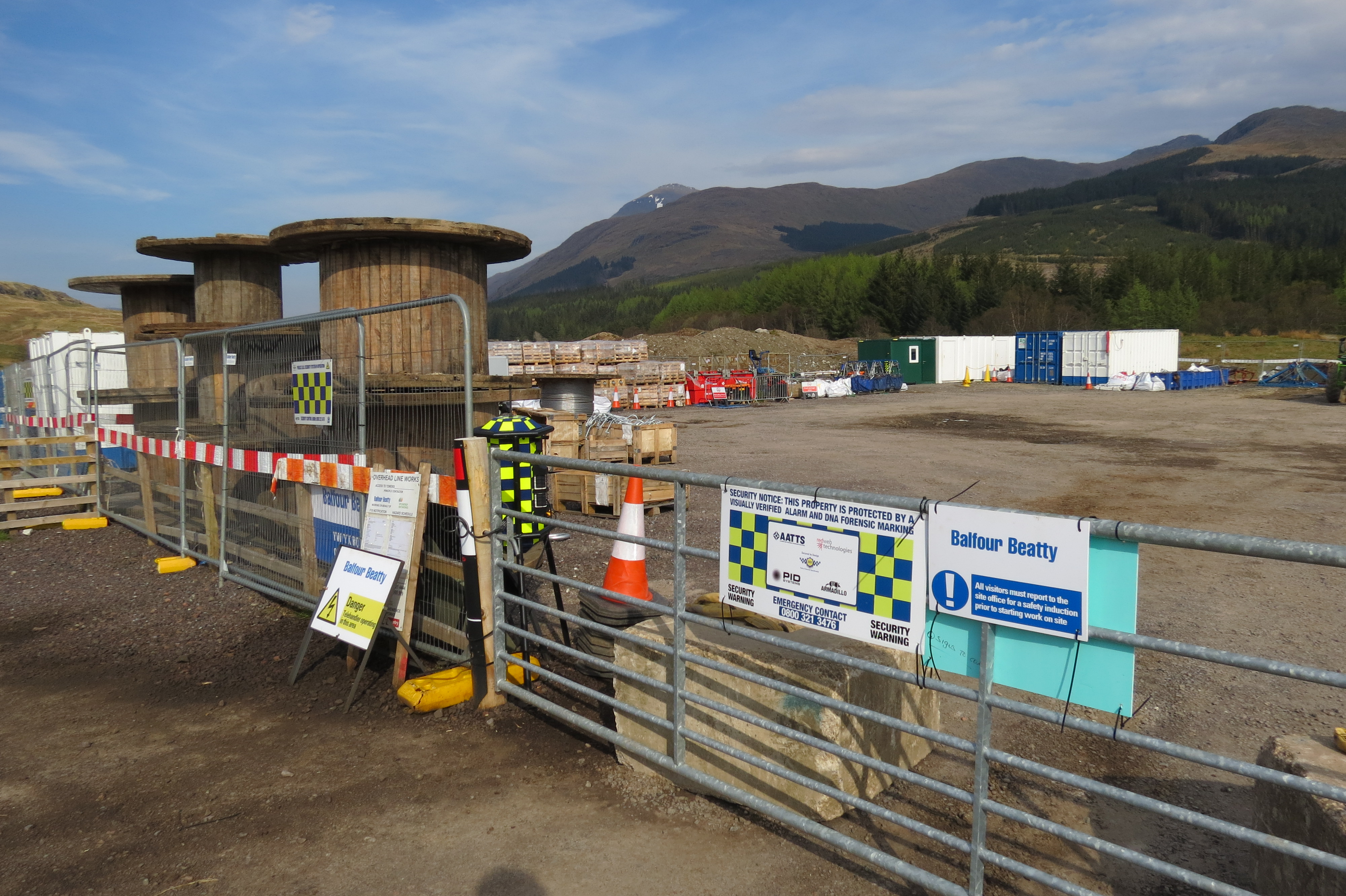
Glen Falloch, linking the head of Loch Lomond with Strathfillan, has always been an important through route – one of the earls of Breadalbane even proposed a canal to link lochs Lomond and Tay – and at times has been intensively used, as when Inverarnan was an important stopping off point for drovers. It has even had its share of industry, with galena being brought here from the Tyndrum lead mines for a time for smelting, and is home to a nexus of powerlines from the National Grid. Despite knowing a bit of its history, or perhaps because of this, I have felt deeply uneasy about the works that have been going on over the last year to install three further “run of river” hydro schemes. The sites for equipment and materials may be temporary, but to anyone driving past they appear industrial in scale. The current works have had a much greater impact than the earlier Allt Fionn scheme which opened in 2012.
So, how come this is happening in a National Park? The brief answer is there is a national commitment to increase renewable energy (which I share) and the LLTNPA “is committed to protecting and enhancing the special characteristics and natural beauty of the Park whilst making a contribution to Scotland’s goals for renewable energy production”. There are are now over 40 hydro schemes in operation or proposed within the National Park.
Glen Falloch, with its links to the National Grid and high rainfall, was particularly well situated from a renewables engineering perspective. The four Glen Falloch schemes all have a generating capacity of over 50 Megawatts, which meant it was the Scottish Government which took the decision to grant planning permission, not the National Park. However the National Park, as a statutory consultee, has had a key role in the design of the schemes and did not object to the final proposals.
While the LLTNPA won planning awards for its Supplementary Planning Guidance on Renewables, which is a compilation of all the requirements a developer must meet, its own policy position is vague:
The landscape character of the National Park is sensitive to new development and typically forms the most important consideration in assessing development proposals both within, and visible from the Park. Landscape values were one of the founding reasons for establishing the National Park designation. There are presently three National Scenic Areas within the National Park for Loch Lomond, the Trossachs, and the River Earn (Comrie to St Fillans only) – see Map 1. The designations pre-date the designation of the National Park where the whole of the area is recognised for its landscape value. All proposals will require to be accompanied by a landscape and visual impact assessment, proportionate to the scale or potential impact of the development. A landscape clerk of works may also be required during construction. (Section 2.3 page 8 Supplementary Planning Guidance Renewables).
This is in contrast to the Cairngorms National Park which has taken a firm stand against windfarms within the National Park on landscape grounds. There is nowhere in the Loch Lomond and Trossachs National Park where renewables developments appear to have been ruled out, hence the Ben Glas scheme https://parkswatchscotland.co.uk/2016/05/12/glen-falloch-hydro-schemes-1-ben-glas/
- “The scheme as a whole and its visibility in the wider and local landscape;”
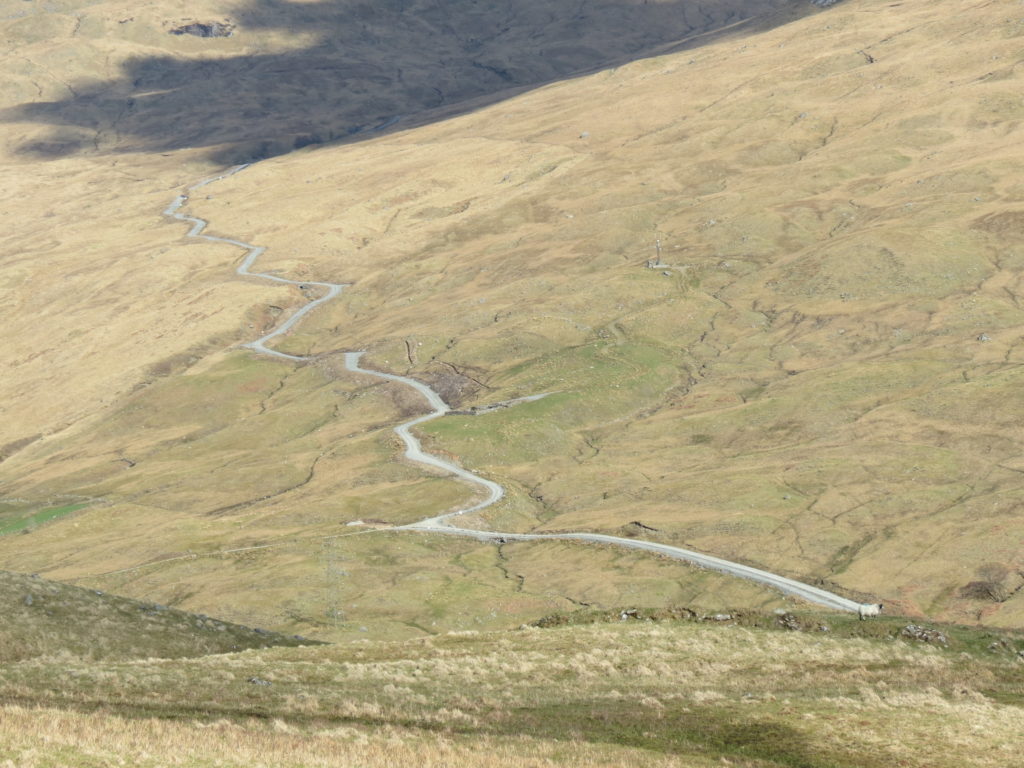
The most visible of the new tracks, here viewed from near the Clach na Briton, runs across the northern slopes of Stob Glas to the Allt Andoran cutting across the grain of the landscape the appearance of which is shaped by the many burns running downhill. The Allt Andoran track has had the most significant visual impact and will leave a permanent scar as it is to be retained for access to the new dam -
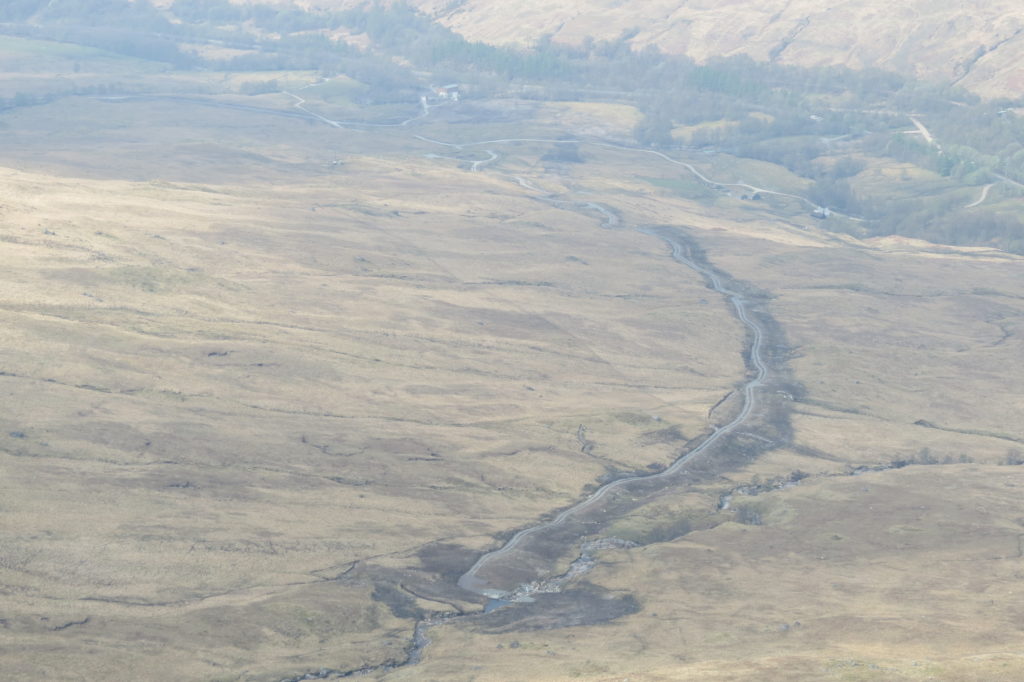
Same access track, running down to Derrydarroch power house, viewed from An Caisteal “The cumulative impact of the scheme’s different components as well as more than one development in or close to a particular location;”
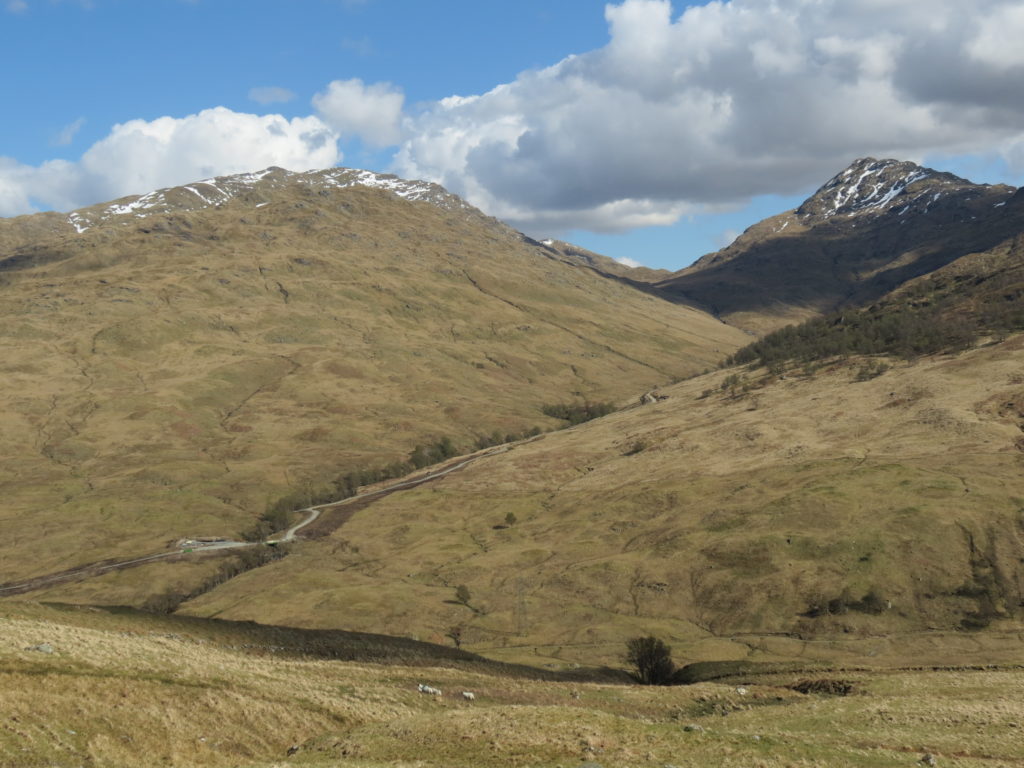
The track up the Allt a Chuillin, Beinn Chabhair behind. This track is likely to be far less visible in the long-term as it follows the line of the burn. In terms of cumulative impact, every glen on the south side of Glen Falloch, as well as Ben Glas, now has an access track and hydro scheme. If this is not cumulative impact what is? - “The impact of permanent and temporary structures; supporting infrastructure such as powerhouses, penstocks (buried or overground), and intakes; associated infrastructure such as access tracks, borrowpits and temporary construction areas;”
-
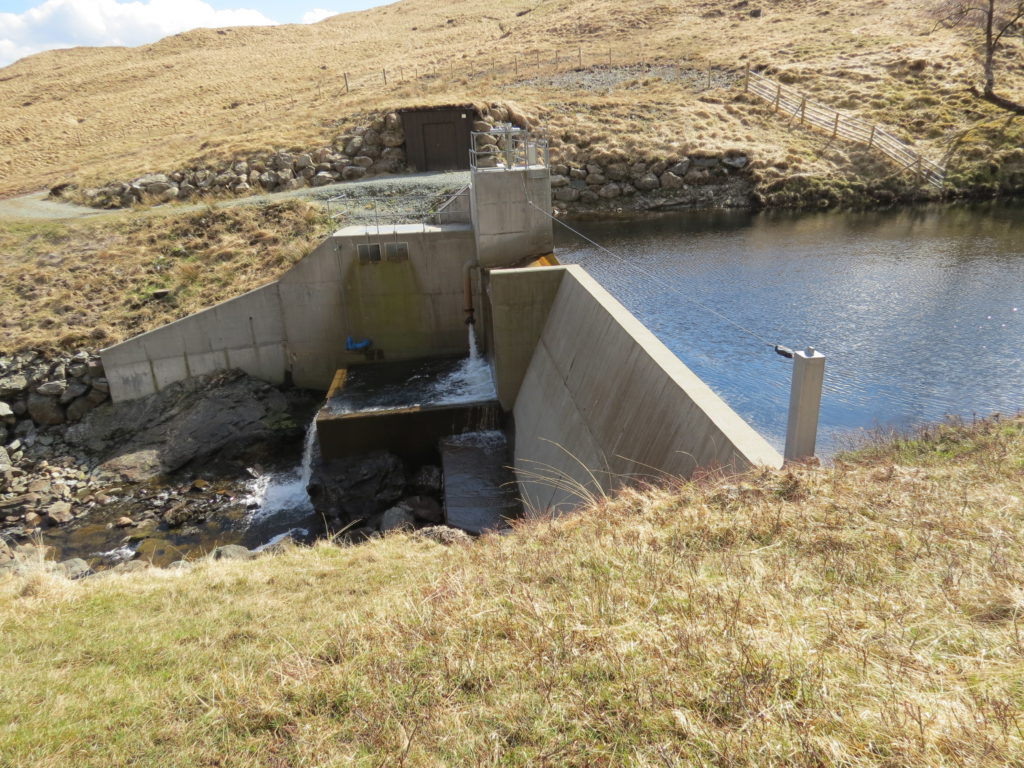
The Allt Fionn dam on northside of Glen Falloch. The dam is well situated at bottom small gorge and almost invisible from above until close to it and the main visual impact is the dam itself. -
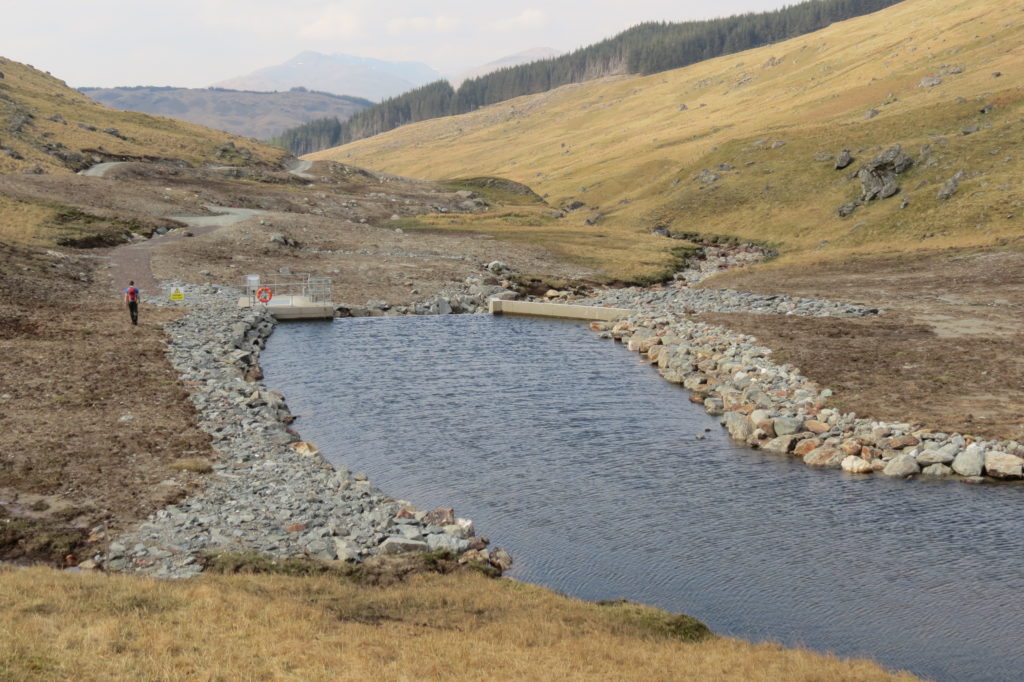
The Upper Glen Falloch scheme. The absence of any natural gorge to impound the water has resulted in more extensive engineering works than the Allt Fionn Scheme and is likely to have much more obvious longer-term impacts on the landscape though the dam itself is hidden from the road. “The design of the structures including scale, materials and colour;”
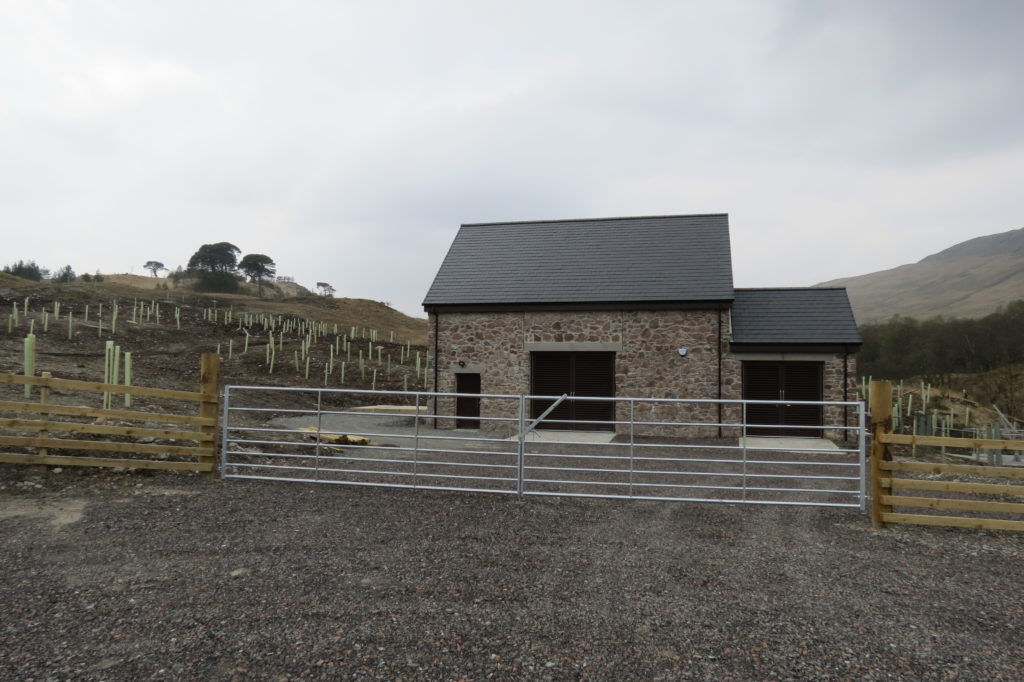
The Glen Falloch powerhouse is close to the floor of the glen and should eventually be hidden by trees. An opportunity has been lost to use natural materials for the gates – ironic given the amount of plantation forest around Crianlarich - “The effects on local landscape character and its scenic quality in terms of the composition of landscape elements (for example walls, fanks, ruins, outcrops, burns and the river course) and how it is experienced;”

The main visitors to the side glens used by the hydro-schemes are hillwalkers. The extension of the track network means that its now much more difficult to access these hills except by bulldozed track. The walking may be easier but the quality, or how the landscape is experienced, has changed. - “The quality and the visual amenity of its morphology (for example waterfalls, rock outcrops, individual boulders, gravel bed and pools), and the effects on the character of a glen as a result of reduced river flow;”
-

Falls of Falloch. The schemes have been designed to preserve the water flow at the Falls of Falloch and the wonderful glacial meltwater gorge upstream which is followed by the West Highland Way unlike the Eagle Falls - “and, Impacts on wildness.
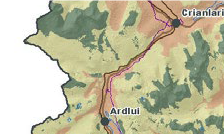
The Park’s view on the Glen Falloch schemes is that:
“We have demonstrated that by working in close and positive collaboration with land managers and renewable energy developers it is possible to reconcile the potentially conflicting priorities of protecting the natural heritage and permitting sustainable economic development in the park.” (Linda McKay, LLTNPA Convener)
I believe the photographs above cast serious doubt on these claims. What I think the LLTNPA could fairly claim is that the design of these schemes is an improvement on what has gone before and the schemes could have been a lot worse. More specifically:
- Almost all the new hydro pipes have been buried, unlike those to the south of Ben Lui which link to the Loch Sloy hydro. Yet most pipes are now undergrounded, whether in National Parks or not, and the LLTNPA has allowed a short section of bright blue pipe to be constructed above ground next to the A82 between the the Derrydaroch and Upper Glen Falloch schemes (sorry no photo!) which is totally out of keeping with the landscape.
-
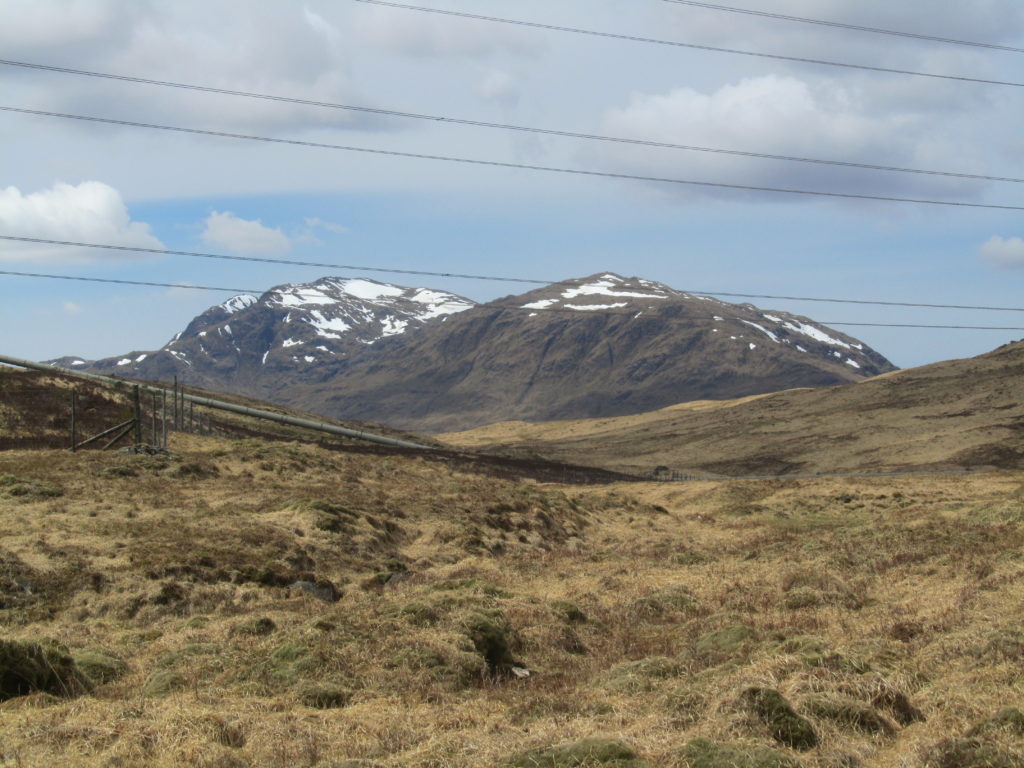
Pipeline Gleann nan Caorann, Beinn Bhuidhe behind. This area should be one of the prime areas of wild land in the National Park - The siting of the Allt Fionn dam lower down has preserve what I regard as a wild and beautiful glen on the south of Ben Oss and Beinn Dubhcraig.
-
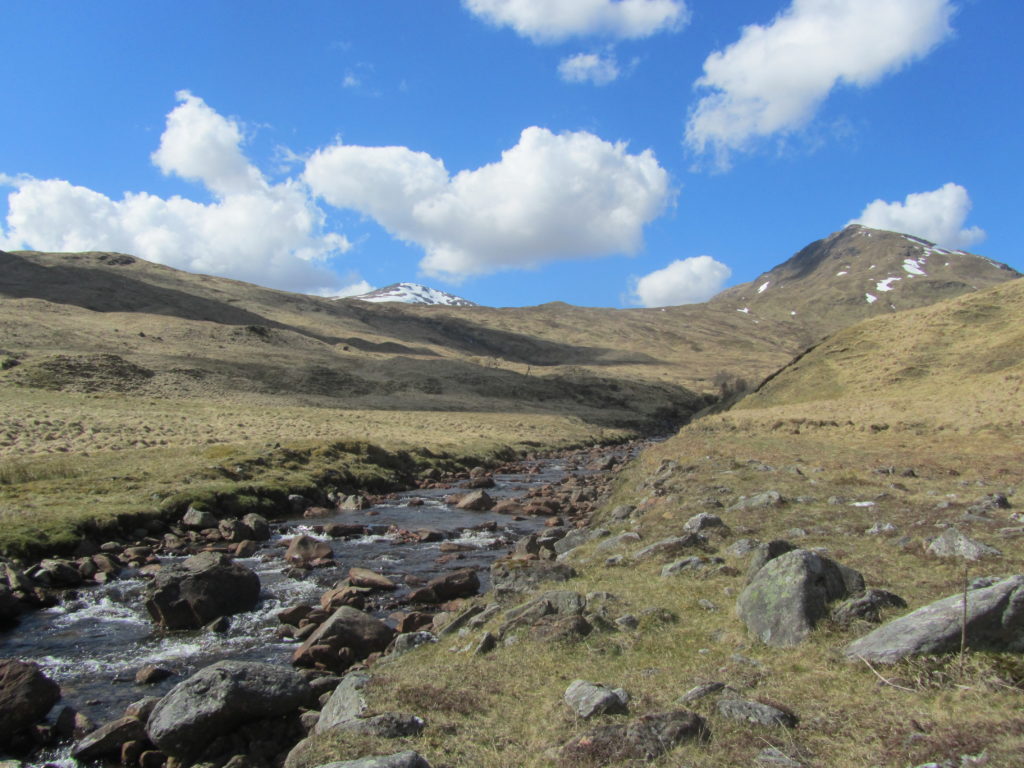
The upper Allt Fionn, Ben Oss and Ben Lui behind, initially proposed as the site for the dam
- The first proposal for the upper Glen Falloch hydro was to connect it to Derrydarroch via another track cutting across the hillside below the north slopes of An Caisteal. The creation of a new powerhouse at least means the access track runs parallel to the river rather than across the hillside.
It needs to be acknowledged therefore that from a landscape and wild land perspective the Glen Falloch hydro schemes could have been a lot worse. This is a National Park though with a conservation remit supposedly built in to its very purpose and every hydro scheme should be designed to avoid permanent adverse impact on the landscape and wild land and, if not, should have been refused. I don’t believe anything could be done to ameliorate the impacts of the Ben Glas scheme – this scheme was clearly in the wrong place – and it is likely that elements of the other three schemes are likely to be have some permanent adverse effects. This is partly a question of the siting of the intakes, access tracks and power houses – the access track cutting across the hillside to the Allt Andoran is the most striking – but also a question of how the land is being “restored” now that the work is almost completed.
While its now too late to change these schemes – which I believe are a lesson to those who care about the Scottish landscapes that we need to consider the impact of hydro-schemes as well as windfarms – its not too late to ameliorate even the worst of their design flaws. I will consider “restoration” and what could be done to lessen the impact of these schemes on the landscape in my next post on the Glen Falloch hydro schemes.


I have been screaming my head off as I drive through this area for the past couple of years. What a disgraceful mutilation. Yet more hills I won’t revisit.